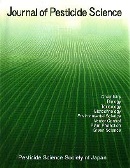Volume 34, Issue 2
Displaying 1-17 of 17 articles from this issue
- |<
- <
- 1
- >
- >|
English Articles
Original Articles
-
Article type: Original Article
2009Volume 34Issue 2 Pages 77-88
Published: May 25, 2009
Released on J-STAGE: June 01, 2009
Advance online publication: April 28, 2009Download PDF (85K) -
Article type: Original Article
2009Volume 34Issue 2 Pages 89-95
Published: May 25, 2009
Released on J-STAGE: June 01, 2009
Advance online publication: April 20, 2009Download PDF (244K)
Notes
-
Article type: Note
2009Volume 34Issue 2 Pages 96-99
Published: May 25, 2009
Released on J-STAGE: June 01, 2009
Advance online publication: April 28, 2009Download PDF (95K) -
Article type: Note
2009Volume 34Issue 2 Pages 100-106
Published: May 25, 2009
Released on J-STAGE: June 01, 2009
Advance online publication: April 20, 2009Download PDF (238K)
The Society Award Lectures (abstract)
-
Article type: Society Awards 2009
2009Volume 34Issue 2 Pages 107-109
Published: May 25, 2009
Released on J-STAGE: June 01, 2009
Download PDF (45K) -
Article type: Society Awards 2009
2009Volume 34Issue 2 Pages 110-112
Published: May 25, 2009
Released on J-STAGE: June 01, 2009
Download PDF (46K) -
Article type: Society Awards 2009
2009Volume 34Issue 2 Pages 113-114
Published: May 25, 2009
Released on J-STAGE: June 01, 2009
Download PDF (35K)
Notice
-
Article type: Notice
2009Volume 34Issue 2 Pages 115
Published: May 25, 2009
Released on J-STAGE: June 01, 2009
Advance online publication: April 20, 2009Download PDF (24K)
PART II (IN JAPANESE)
Greetings from new president
-
Article type: Greetings from new president
2009Volume 34Issue 2 Pages 117
Published: May 25, 2009
Released on J-STAGE: December 14, 2013
Download PDF (142K)
The Society Award Lectures
-
Article type: The Society Award Lecture
2009Volume 34Issue 2 Pages 119-126
Published: May 25, 2009
Released on J-STAGE: December 14, 2013
Download PDF (3548K) -
Article type: The Society Award Lecture
2009Volume 34Issue 2 Pages 127-135
Published: May 25, 2009
Released on J-STAGE: December 14, 2013
Download PDF (774K) -
Article type: The Society Award Lecture
2009Volume 34Issue 2 Pages 136-144
Published: May 25, 2009
Released on J-STAGE: December 14, 2013
Download PDF (556K)
Abstracts of Articles in Part I
-
2009Volume 34Issue 2 Pages 145-146
Published: May 25, 2009
Released on J-STAGE: December 14, 2013
Download PDF (132K)
Commentary
-
Article type: Commentary
2009Volume 34Issue 2 Pages 147-152
Published: May 25, 2009
Released on J-STAGE: December 14, 2013
Download PDF (434K)
Symposia
-
Article type: Symposia
2009Volume 34Issue 2 Pages 153-154
Published: May 25, 2009
Released on J-STAGE: December 14, 2013
Download PDF (181K) -
Article type: Symposia
2009Volume 34Issue 2 Pages 155-158
Published: May 25, 2009
Released on J-STAGE: December 14, 2013
Download PDF (262K)
Book Review
-
Article type: Book Review
2009Volume 34Issue 2 Pages 159-
Published: May 25, 2009
Released on J-STAGE: December 14, 2013
Download PDF (115K)
- |<
- <
- 1
- >
- >|
